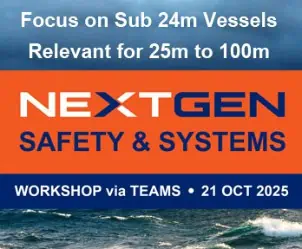Scania, one of the world’s leading manufacturers of engines for boats, trucks, buses and industrial applications, powers a new research vessel for the University of Hawai’ at Mānoa on behalf of the Hawai’i Institute of Marine Biology. The twin V8 Scania-powered vessel was built by All American Marine of Bellingham, Washington.
The vessel is equipped with two fixed pitch propellers, powered by twin Scania DI16, 082M, Tier 3 engines, rated at 800 mhp @ 2100 RPM. This propulsion package was selected to ensure excellent fuel economy, while also maintaining an estimated fully laden cruise speed of 22-24 knots and a fuel-efficient minimum survey speed of three knots. The twin-engine speed, fuel-efficiency and reliability coupled with 1,800 gallons of fuel capacity will allow the University of Hawai’i to access and study marine environments throughout the Hawaiian Islands.
“We are beyond excited to be selected by the University of Hawai’i, and by the continued support of our partners at All American Marine,” said David Hughes, Sales Manager of marine products for Scania USA. “Our diesel marine engines lead the industry in power-to-weight ratio and efficiency and are perfectly suited for the long offshore missions this vessel is designed for. We are confident that the operators of this vessel will be completely satisfied with the performance and reliability that Scania is known for.”
The state-of-the-art research vessel is a 68.5-foot by 25-foot semi-displacement aluminum catamaran hull that was developed by Nic de Waal of Teknicraft Design in Auckland, New Zealand. The vessel was constructed to US Coast Guard (USCG) standards and will operate as a multipurpose research vessel in the Hawaiian Waters and Offshore on Ocean Routes. The Teknicraft design and All American Marine’s construction will be fundamental to meet the University of Hawai’i’s research goals in supporting a science team of eight during offshore multi-day missions and 22 students/crew on shorter day excursions.












